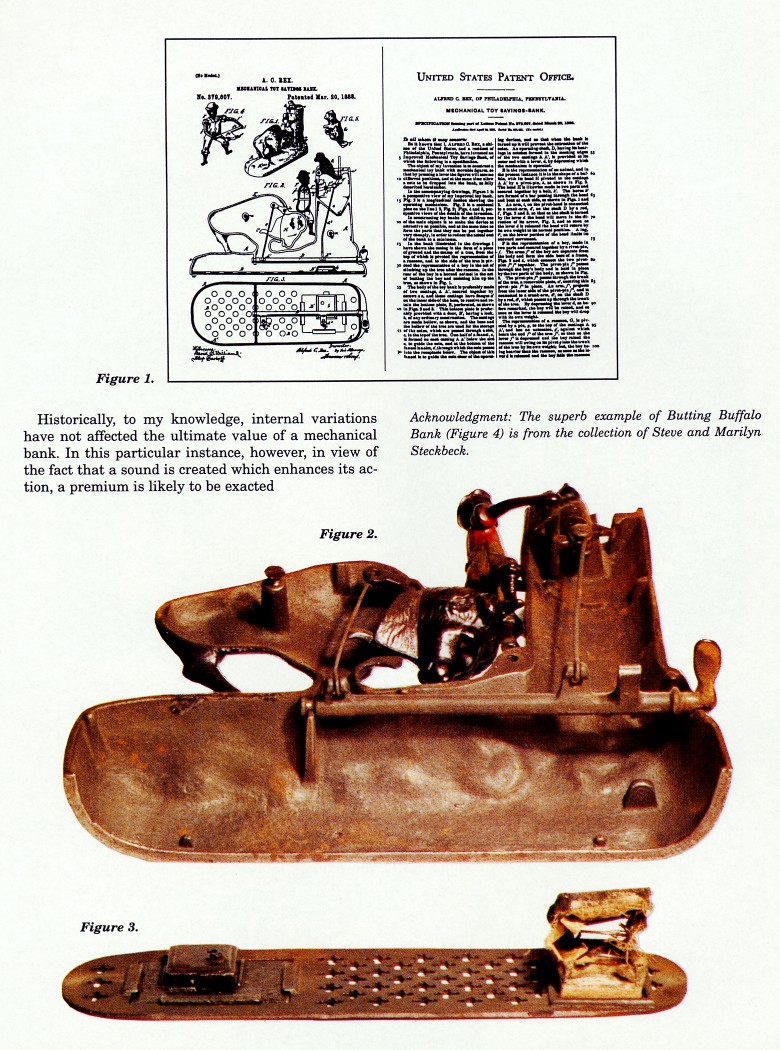|
The Butting Buffalo Bank, Part II
A Unique Squeaker Variation
by Sy Schreckinger – ANTIQUE TOY WORLD Magazine – January, 1998
Discovery of a new variation of a mechanical
bank, especially one that is desirable and popular, generally creates
excitement and interest among collectors. Such was the result recently,
when I was sent a Butting Buffalo Bank that was sadly in need of repair of
its mechanism.
Disassembly of the bank revealed both its hidden defect and,
surprisingly, an internal variation heretofore unknown. Instead of
activation via the usual method, i.e., a series of weighted internal parts
(refer to patent papers in Figure 1), this mechanical was driven by a
spring-tension, air-bellows squeaker (Figures 2 and 3). Lacking this
squeaker, the bank remained inanimate and mute. Action of this newly
discovered variant is similar to the more familiar bank (Figure 4), except
for the unexpected "yelp!" which is heard at precisely the time of the
black man's nose-to-nose encounter with the frightened raccoon.
The question of why Louis Kyser and Alfred C. Rex, manufacturers of
the Butting Buffalo Bank, chose to omit the squeaker, thus eliminating the
addition of a humorous sound, may be answered by a paragraph within the
patent's description (Figure 1). In it, Mr. Rex states, "In constructing
toy banks for children, one of the main objects is to make the device as
attractive as possible, and at the same time so form the parts that they
can be put together very cheaply, in order to reduce the actual cost of
the bank to a minimum." Therefore, it may be concluded that the
prohibitive cost involved in construction and installation of the squeaker
was the persuasive factor for the elimination of the bellows from
subsequent production.
Historically, to my knowledge, internal variations have not affected
the ultimate value of a mechanical bank. In this particular instance,
however, in view of the fact that a sound is created which enhances its
action, a premium is likely to be exacted.
Acknowledgment: The superb example of Butting Buffalo Bank (Figure 4)
is from the collection of Steve and Marilyn Steckbeck.
ADDENDUM: (from
February, 1998) Please refer to my article "Butting Buffalo Bank,"
Part 2 in the January 1998 issue of Antique Toy World. I erroneously
omitted mention that this was an adjunct to my "Butting Buffalo Bank"
article in the September 1988 issue of Antique Toy World.
|


